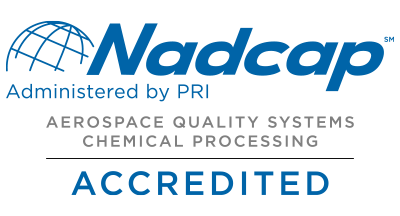Almost all surface finishes cause some dimensional change, however small, to the part being finished. Many coatings even result in a significant buildup-a buildup that should ideally be considered while the part is being designed.
Typically, though, metal finishers and machinists are concerned with controlling the dimensions of existing parts on which design changes are not possible. What at first looks like a “simple” plating job can actually entail complicated considerations involving electricity, chemistry, and physics, and it may require special processing steps.
On the other hand, with the right preliminary information and the right testing, half the plater’s problems are solved. And while plating thicknesses are sometimes difficult to predict, after trial runs and process adjustments they can be duplicated quite accurately.
If the part’s design can’t be changed- and it usually can’t- then it often falls to the plater to insure that final dimensions are maintained. A basic formula of electroplating states that the amount of plating deposited is proportional to the amount of electricity that passes from the anode to the part.
In other words, plating thickness is directly related to amps and time, or “amp-minutes.” (The power company figures your electricity bill each month based on the number of amp-minutes registered on your meter.)
For example, say a part is plated at 10 amps for 10 minutes (100 ampminutes ) and the resulting coating is 0.0002 in. thick, but a 0.0003-in. minimum is required. According to the basic formula, increasing the ampminutes from 100 to 150-increasing them by half will generate the required additional thickness. So thickness and amp-minutes have a predictable, proportional relation to one another-in theory. Remember that this formula is a guideline. As such, it’s far from being reliable as a technical measurement.
Variations, variables
Two common plating baths conform neatly to the values of the basic formula: acid copper sulfate and silver cyanide. With these solutions, increases in thickness are proportional to increases in amp-minutes.
Both solutions plate very efficiently, at nearly 100 percent of what the formula predicts. But some baths-conventional hard chrome, for instance-may plate at less than 20 percent efficiency. Such baths can require increases in amp-minutes vastly different from what the formula would suggest.
Here, your plater’s experience and technical knowledge are the best guides in estimating how a particular coating will affect dimensions. Especially on unusual coatings, we advise trial runs that include careful, sophisticated thickness testing.
--
Surface Finishes, Coatings Dimensional Change, Metal Finishers, Plating Thickness, Electroplating, Amp-Minutes Relationship, Plating Formulas, Plating Efficiency, Hard Chrome Plating, Dimensional Maintenance in Plating













